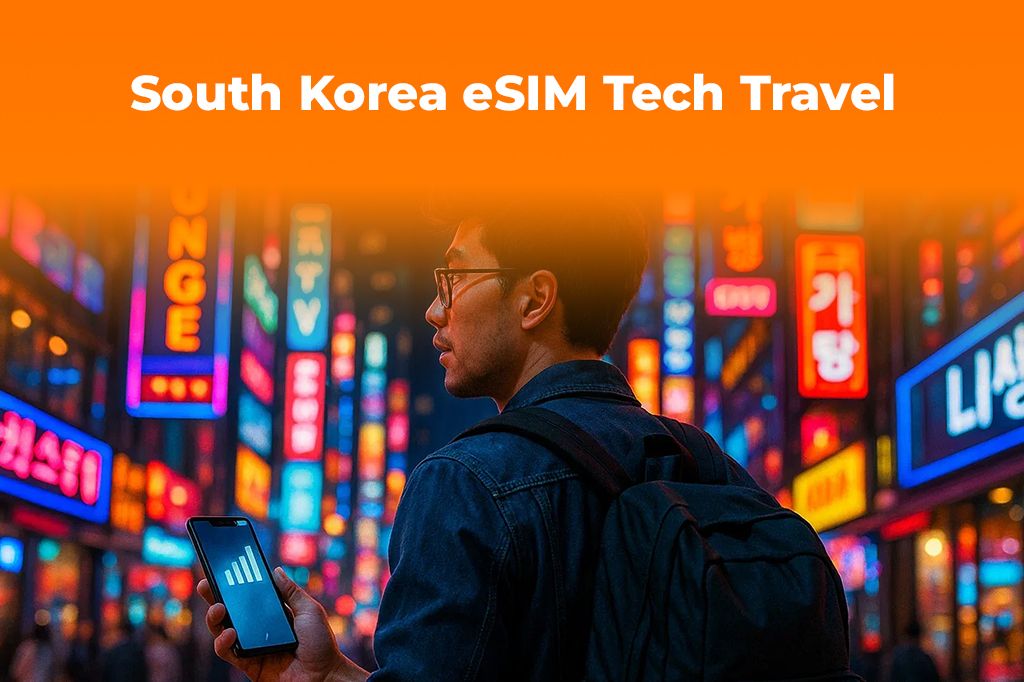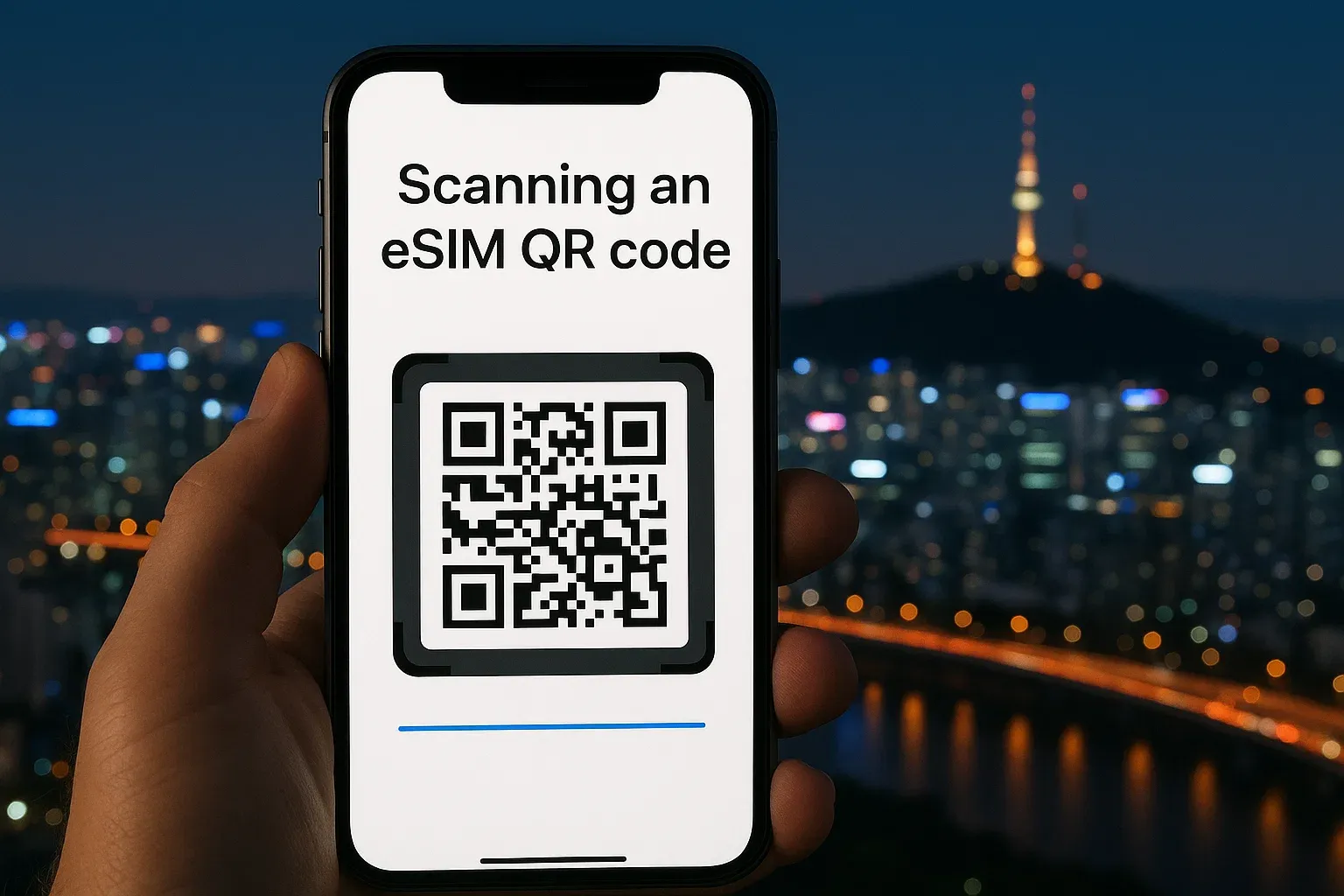A full guide for tech-focused travelers exploring South Korea, covering eSIM setup, the best data options, and smart tips for staying connected across Seoul and beyond.
You get the smoothest experience when you secure an eSIM for South Korea before you fly, because this gives you instant access to maps, tickets, and translation tools the moment you land at Incheon. This matters when your trip includes Seoul’s tech districts, smart museums, and major digital attractions. If you want a seamless start to your adventure, you can activate your plan early and enjoy stable Seoul travel data from day one.

Why South Korea Is a Top Tech Tourism Destination
South Korea offers one of the world’s most advanced technology ecosystems. You experience fast 5G speeds, futuristic shopping districts, AI-powered museums, and advanced payment systems everywhere you go. Cities like Seoul, Busan, and Daegu integrate technology into daily life, making them perfect for travelers who love innovation.
This environment makes reliable connectivity essential. Before choosing your plan, it helps to know what is an eSIM card, since digital SIMs give you instant activation and consistent performance without needing a physical Korea tourist SIM card.
If you want easy navigation, fast uploads, and uninterrupted access to travel tools, a digital setup becomes the smarter choice.
Why You Should Use an eSIM for South Korea
South Korea’s mobile networks rank among the fastest in the world. Using an eSIM helps you connect to these networks instantly with less hassle than physical tourist SIMs.
Key advantages:
- No waiting in lines after arrival
- No risk of losing a physical SIM
- Fast activation with a QR code
- Better speeds for creators and remote workers
- Simple switching between local and international plans
Many visitors say this is the easiest way to get Seoul travel data without stress.
If you want clarity on how eSIMs work for various regions, you can explore how Yoho Mobile works and compare coverage options before your trip.
How Travelers Use Mobile Data Throughout South Korea
You rely on strong connectivity throughout your visit because so many daily activities depend on apps and digital systems.
Popular uses for Seoul travel data:
- Navigation on buses, subways, and high-speed KTX trains
- AI translation during museum tours
- QR-code entry at events
- Mobile payments at stores and cafés
- Accessing travel passes and digital tickets
- Sharing photos and videos from vibrant city streets
Without a proper plan, you may face expensive roaming charges or slow hotel Wi-Fi.
The Best Data Plan for Korea: What to Look For
Finding the best data plan for Korea depends on your priorities. Some travelers want high-speed performance for streaming or work, while others want a simple plan with strong coverage.
Here’s what to consider:
- Speed and reliability: 4G/5G access
- Coverage: Works across cities, ski resorts, islands, and rural areas
- Duration: Match your plan’s validity with your trip length
- Top-up options: Useful for long stays
- Compatibility: Support across major phones under GSMA eSIM standards
You should choose a plan that fits your travel goals, especially if you’ll visit tech landmarks like Digital Media City or Samsung Innovation Museum.
Should You Still Buy a Korea Tourist SIM Card?
Tourist SIM cards remain common, especially at airports or convenience stores. But physical cards come with drawbacks:
- Long airport queues
- Higher tourist pricing
- Limited durations
- Risk of losing the SIM
- Difficult to replace if damaged
Travelers who stay only in Seoul might find these SIMs fine, but digital options work better for multi-city trips.
Why Tech Tourists Prefer eSIMs
If you plan to explore Korea’s top tech attractions, reliable data matters even more.
Popular spots where strong mobile data helps:
- COEX Mall — home to the Starfield Library and VR exhibitions
- Samsung Innovation Museum — interactive displays need online tools
- Digital Media City — AR tours and tech samples
- Dongdaemun Design Plaza (DDP) — event schedules update in real time
- Hongdae — live streams and social content uploads
Using an eSIM for South Korea ensures your apps, cameras, and navigation tools stay responsive everywhere you go.
Step-by-Step: How to Install an eSIM for South Korea
Setting up your travel plan before your flight makes your arrival much easier.
1. Check Device Compatibility
Most modern phones support eSIM under GSMA standards, including iPhone, Samsung Galaxy, Google Pixel, and many OPPO models.
2. Buy Your Plan
Choose a plan that covers the entire country. Some also include regional options if you plan to visit Japan or Taiwan afterward.
3. Receive Your QR Code
Your provider sends you an email containing activation instructions.
4. Open SIM Settings
Go to Settings → Mobile Network → Add eSIM.
5. Scan the QR Code
Point your camera at the code and wait a few seconds.
6. Assign the Data Line
Set the eSIM as your main data connection.
7. Turn On Data Roaming
This enables your plan to activate once you land.
8. Restart and Test
A quick restart improves network accuracy.
Once these steps are complete, your phone connects automatically after touching down at Incheon International Airport.

Where Strong Data Helps Most in South Korea
Reliable connectivity supports every part of your itinerary.
1. Seoul
You move through sprawling districts like Gangnam, Hongdae, Itaewon, and Myeongdong. You need instant access to maps, reviews, and subway routes.
2. Busan
Visit Haeundae Beach, Gamcheon Culture Village, and BIFF Square. Strong coverage keeps you connected along the coast.
3. Jeju Island
Navigation and translation become essential during sightseeing around waterfalls, beaches, and parks.
4. DMZ Tours
Guided routes and digital information rely on steady connections.
5. Ski Resorts
Places like Pyeongchang and Vivaldi Park benefit from solid network coverage for booking transport and gear.
Every destination becomes easier to enjoy when your phone connects quickly and reliably.
How Tech Travelers Use Data for Content Creation
South Korea provides vibrant landscapes, LED displays, and futuristic street scenes. Many creators rely on fast uploads and strong real-time performance.
An eSIM for South Korea helps you:
- Upload 4K videos directly from your phone
- Stream live content in busy districts
- Back up photos to the cloud instantly
- Use AI editing tools that require a network
- Coordinate collaborations with local creators
If you want consistent speeds during content days, you can activate a Yoho eSIM ahead of time and avoid relying on spotty public Wi-Fi.
How Local Apps Rely on Strong Data
You’ll find that many services in Korea depend on mobile connectivity.
Important apps to use:
- KakaoMetro for subway navigation
- KakaoT for taxis
- Naver Maps for detailed walking routes
- Papago for translation
- Coupang Eats for food delivery
- Korail for KTX tickets
- Discover Seoul Pass for attractions
Stable Seoul travel data ensures you can use these tools without interruptions.
Saving Money While Staying Connected
Travelers often want strong service without overpaying. An eSIM keeps costs manageable by avoiding U.S. or international carrier roaming fees.
Ways to save:
- Compare regional plans
- Choose multi-day bundles
- Use data-saving tools inside apps
- Connect to secure Wi-Fi only when needed
- Rely on one unified plan instead of multiple SIMs
If you travel across Asia, some plans also include Japan, Singapore, or Thailand, helping stretch your budget further.
Top Tech Attractions to Explore With Reliable Data
Lotte World Tower
Use mobile apps to book tickets and navigate floors.
Starfield Library
Upload photos instantly without slow public Wi-Fi.
COEX Aquarium
Access digital guides during your visit.
Hongdae’s AR Street Performances
Some AR experiences require active mobile data.
N Seoul Tower
Stay online for real-time ticket updates and nearby routes.
Data helps you use digital experiences fully without delays.
Key Takeaways for Tech Travelers in Korea
- You get faster performance with an eSIM for South Korea
- Seoul travel data supports navigation, payments, and content creation
- Digital plans work better than a traditional Korea tourist sim card
- The best data plan for Korea depends on your itinerary length and speed needs
- Activating an eSIM before your flight creates a smooth arrival
If you want dependable coverage throughout Seoul and other major cities, you can explore Yoho Mobile plans and enjoy instant activation.
FAQs About Connectivity in South Korea
1. Is mobile data fast across South Korea?
Yes. South Korea ranks among the fastest 5G countries in the world.
2. Can I use my U.S. or European phone in Korea?
Most modern phones work well, especially those supporting GSMA eSIM standards.
3. Is an eSIM better than a tourist SIM?
For most travelers, yes. Activation is easier and more flexible across trip lengths.
4. Will one plan cover the whole country?
Most nationwide plans cover all major cities and regions.
5. Can I top up my data mid-trip?
Yes. Most providers allow easy top-ups through your account dashboard.
Conclusion
You can travel more confidently when your phone stays connected from the moment you arrive in Seoul. If you want fast speeds, simple activation, and reliable service across South Korea, you can explore Yoho Mobile’s eSIM plans and enjoy a seamless tech-focused adventure.
